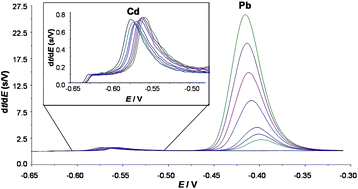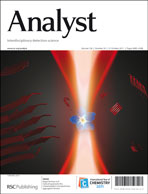Direct determination of free metal concentration by implementing stripping chronopotentiometry as the second stage of AGNES†
Abstract
The electroanalytical technique Absence of Gradients and Nernstian Equilibrium Stripping (AGNES) has been extended by applying stripping


 Please wait while we load your content...
Please wait while we load your content...